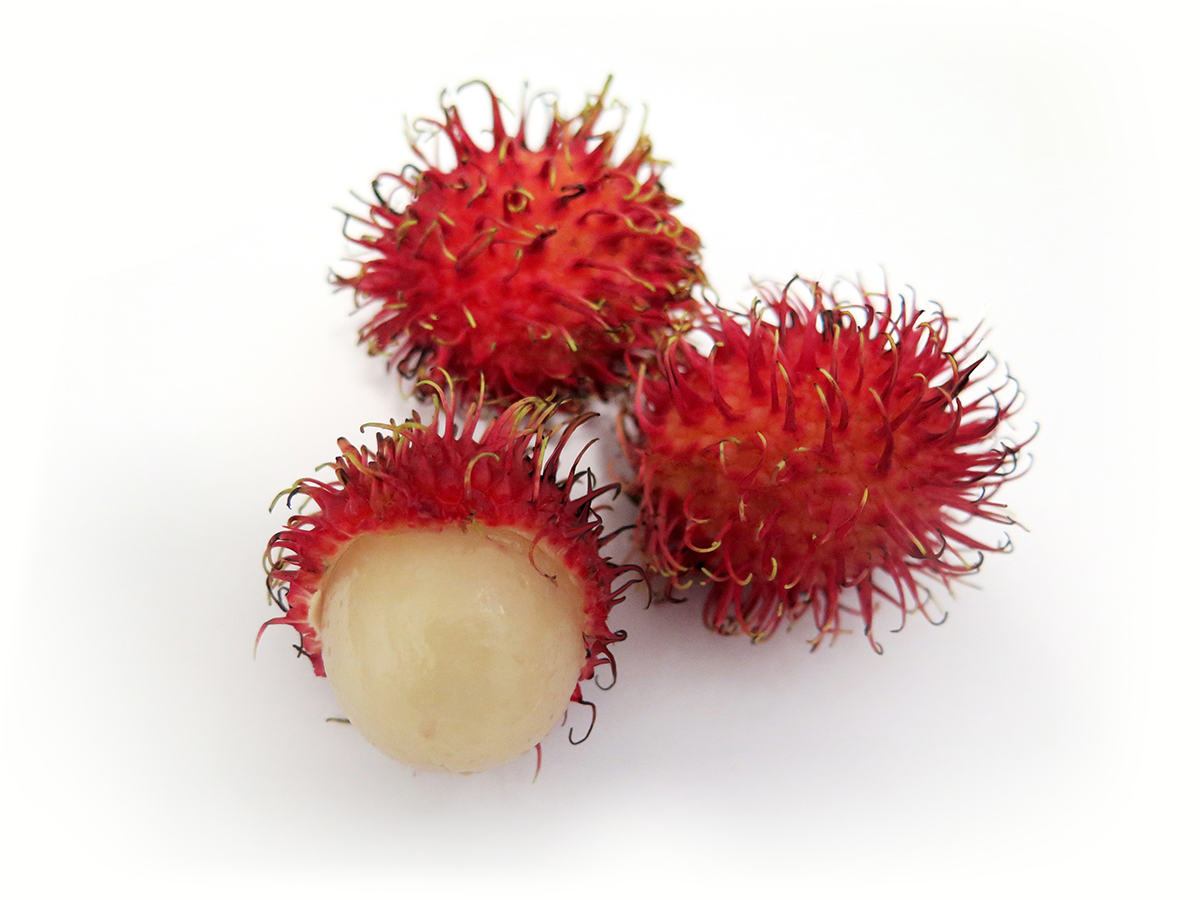Rambutan
This page has information about growing rambutan at home in the Northern Territory (NT).
About rambutan
Name: rambutan, nephelium iappaceum (sapindaceae).
Origin: Malaysia and Indonesia.
Distribution: rambutan is mainly grown in Thailand, Malaysia and Indonesia.
Australian distribution: rambutan is grown around Darwin in the NT and in coastal regions in north Queensland.
Description
Rambutan trees can grow up to 25m tall if not pruned. Backyard growers usually keep their trees between 4m and 8m for ease of harvesting.
Rambutan trees have a straight trunk and a dense crown. The leaves are dark green.
Flowers can be male, female or hermaphrodite.
The fruit is oval shaped and golf-ball sized. It can be pinkish red or yellow with a thin, leathery rind covered in soft spines called spinterns. The flesh of the fruit is white and juicy with a small seed in the middle.
Preferred climate and soil
Rambutans prefer humid places with high annual rainfall of over 2,000mm and average minimum temperatures above 20 degrees Celsius. They grow best in temperatures of around 30 degrees Celsius.
Rambutans prefer a well drained, deep loamy soil with a pH of around 5.5 and 6.5.
Varieties
The main rambutan varieties grown in Australia are jitlee, R156, R167 and R134.
Propagation
Rambutan can be grown from seeds or by vegetative propagation.
Pests and diseases
There are several pests and diseases that affect rambutan in NT, including birds, flying foxes, loopers, beetles, red-banded thrips, flatids, mealy bugs, scales, fungal infections and rots.
You will need to look after your rambutans to reduce crop loss or damage.
Fruit season
Rambutans produce fruit from October to mid-January in the NT.
Harvest
Rambutan must be harvested when ripe. This is usually two or three weeks after they change colour.
Fruit can be harvested with a hand-held picking pole from the ground.
Storage
Rambutan fruit should be cooled with water after picking and stored at 8 to 10 degrees Celsius in a humid room.
Eating
Rambutans are eaten fresh. The peeled fruit is canned in syrup and served as a dessert.
Give feedback about this page.
Share this page:
URL copied!
